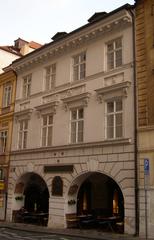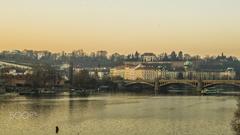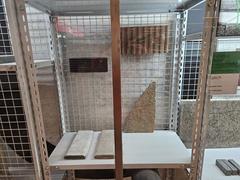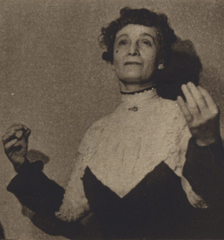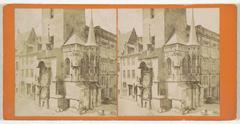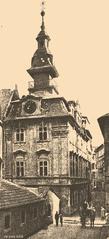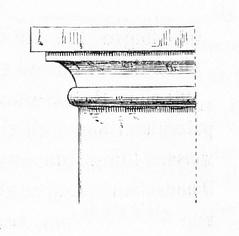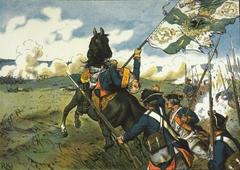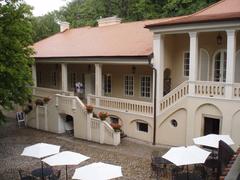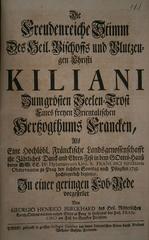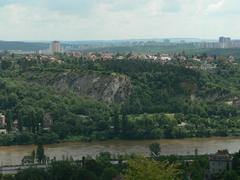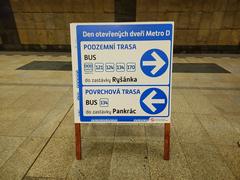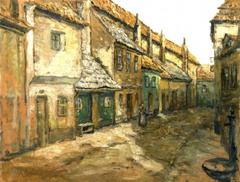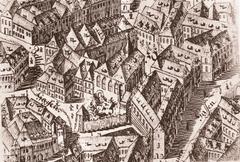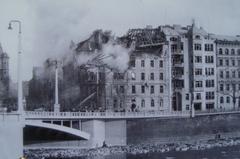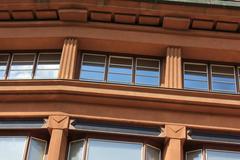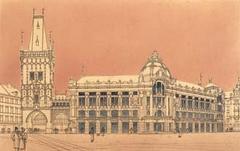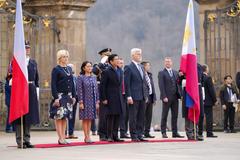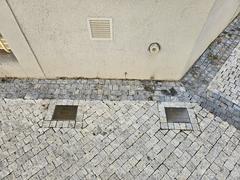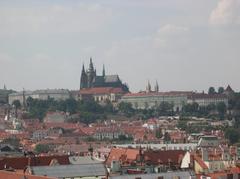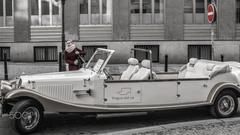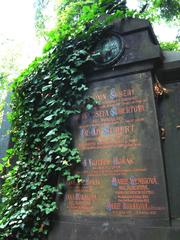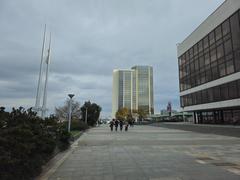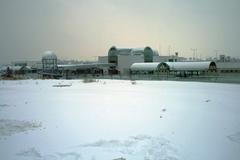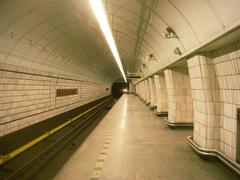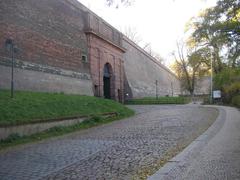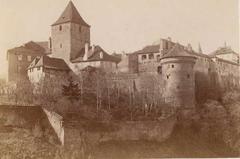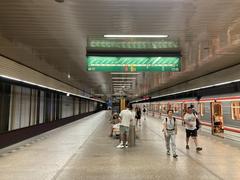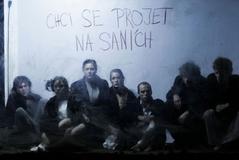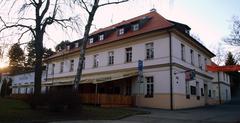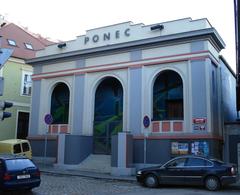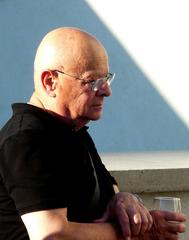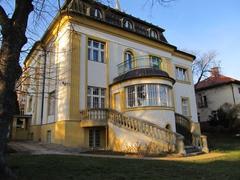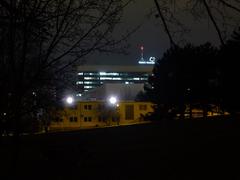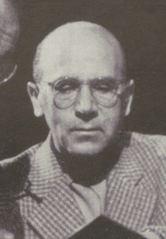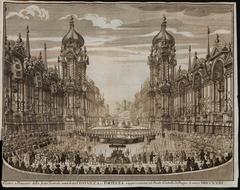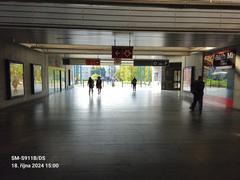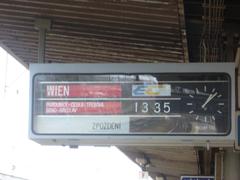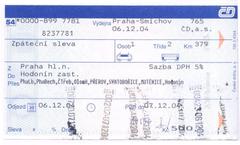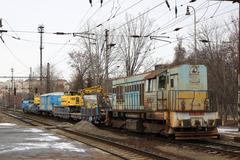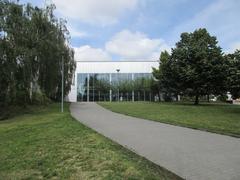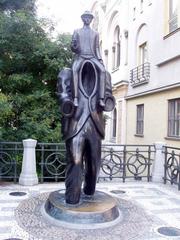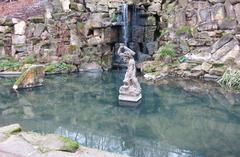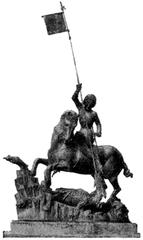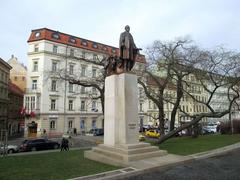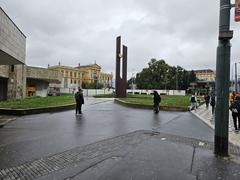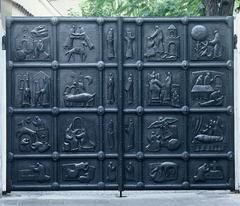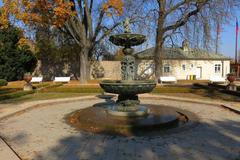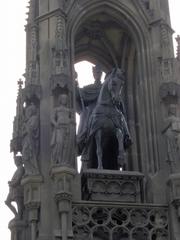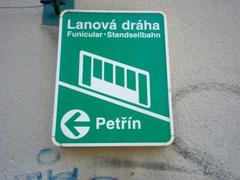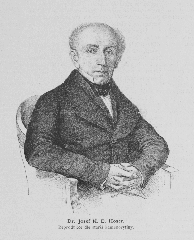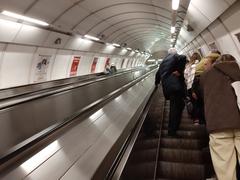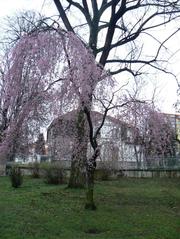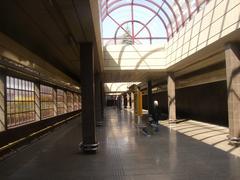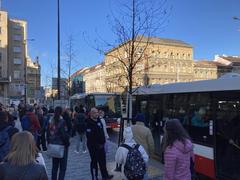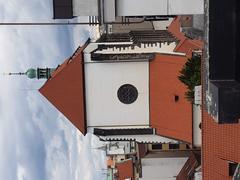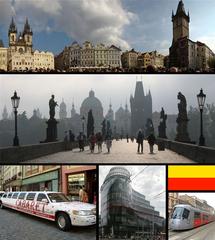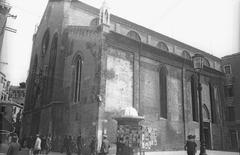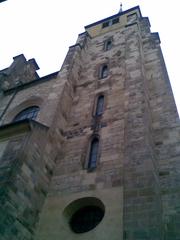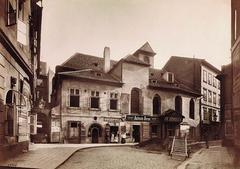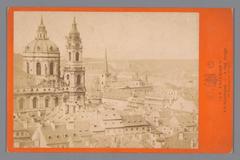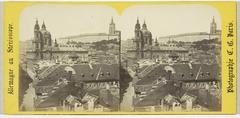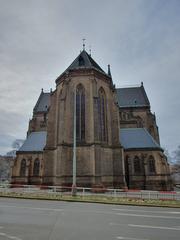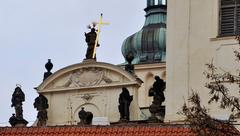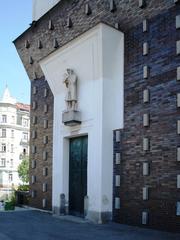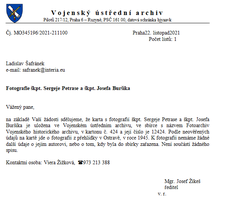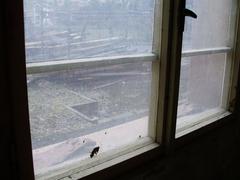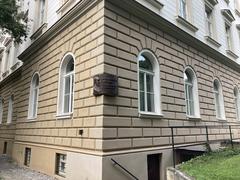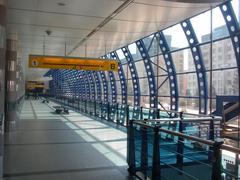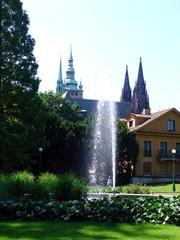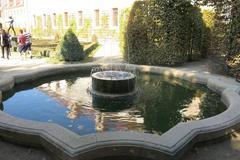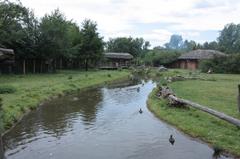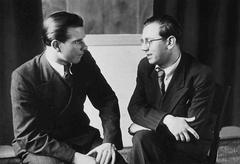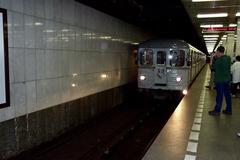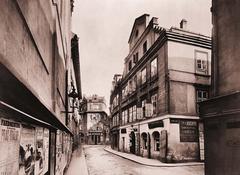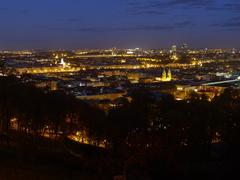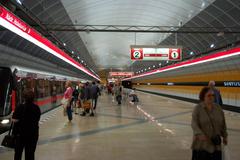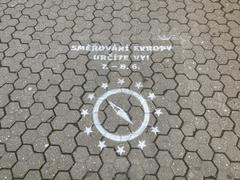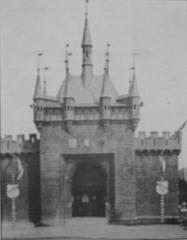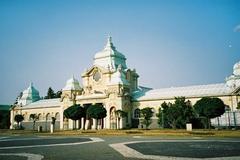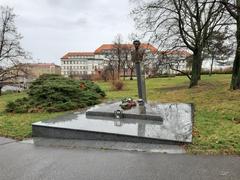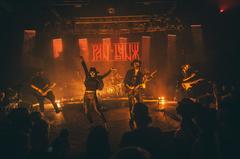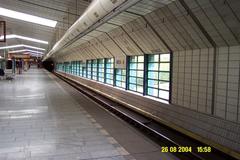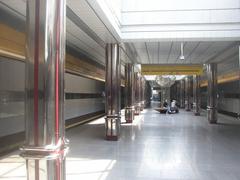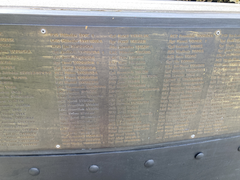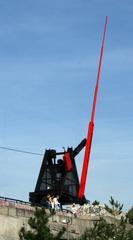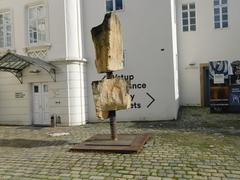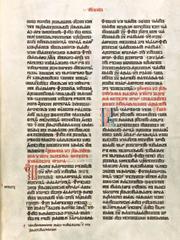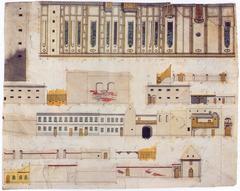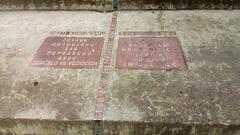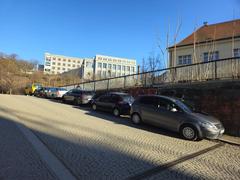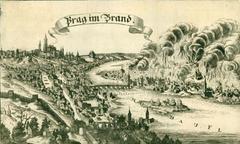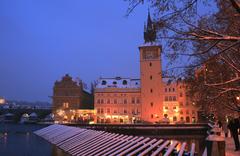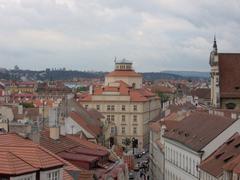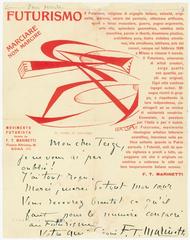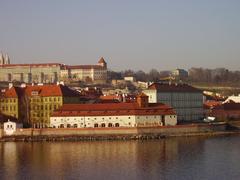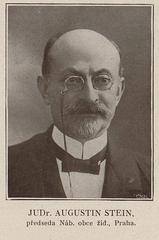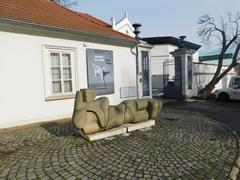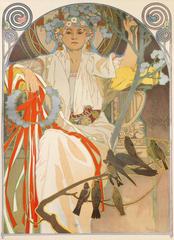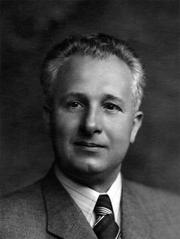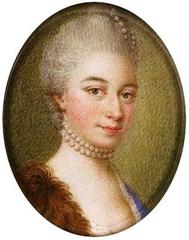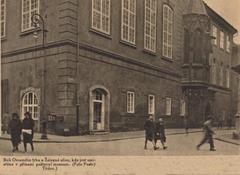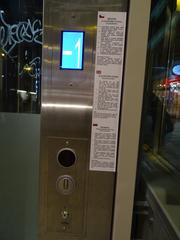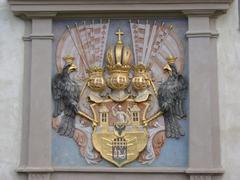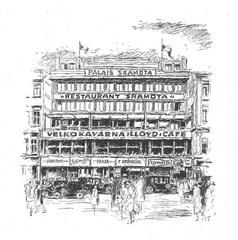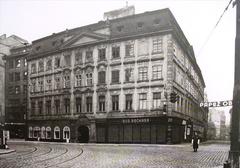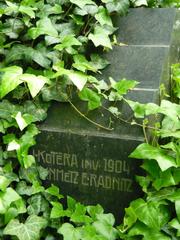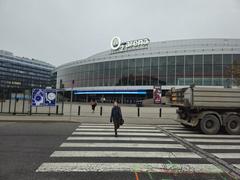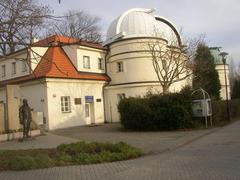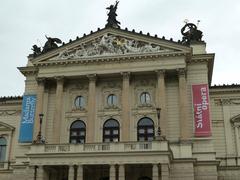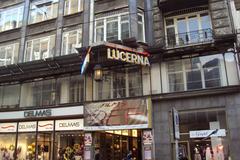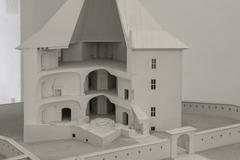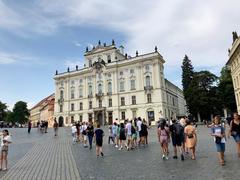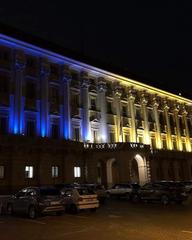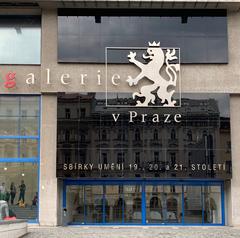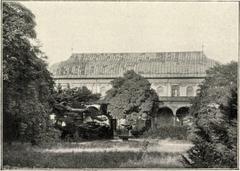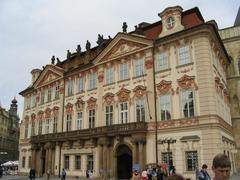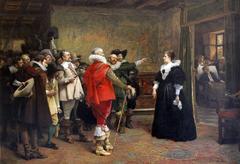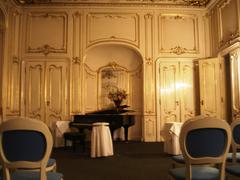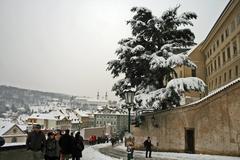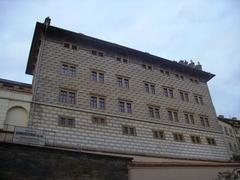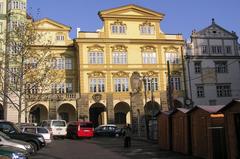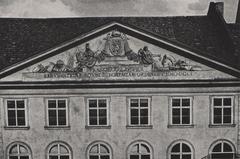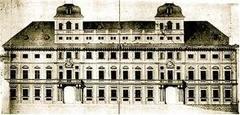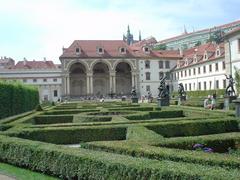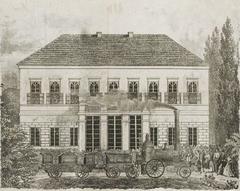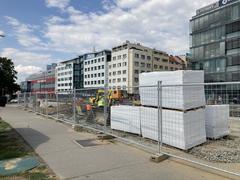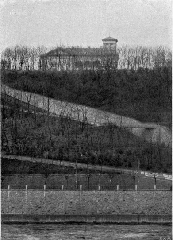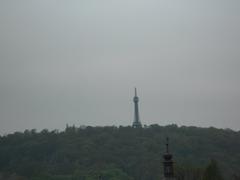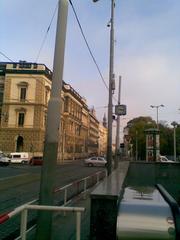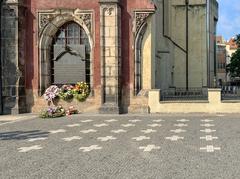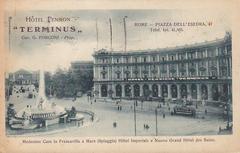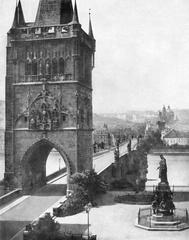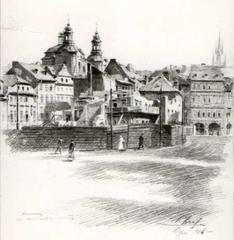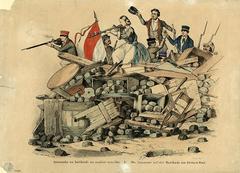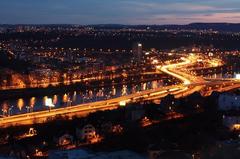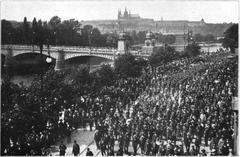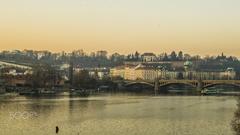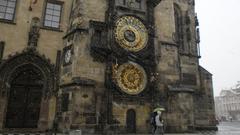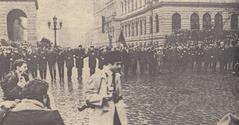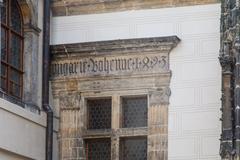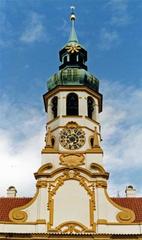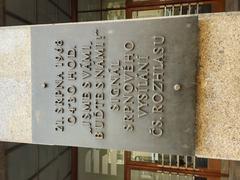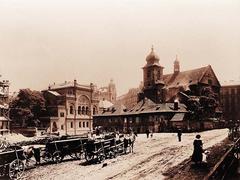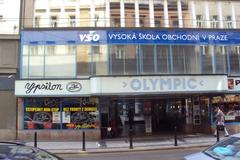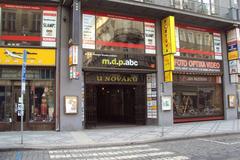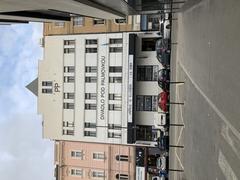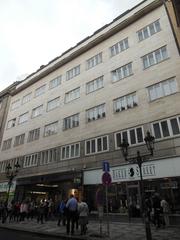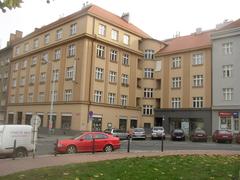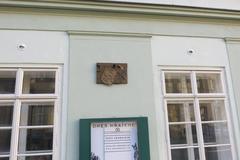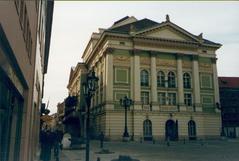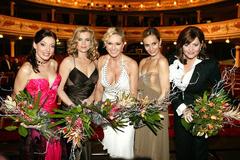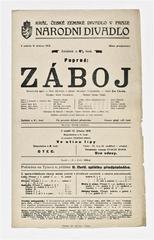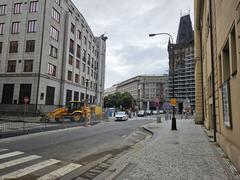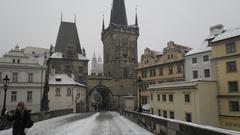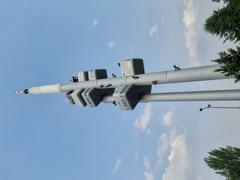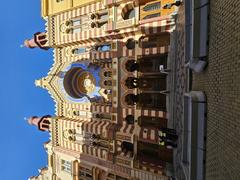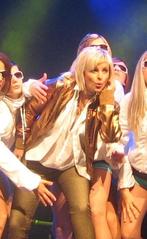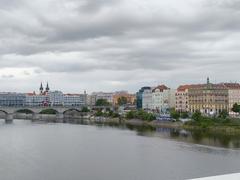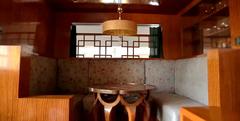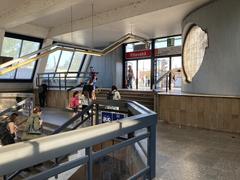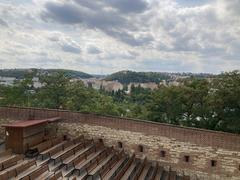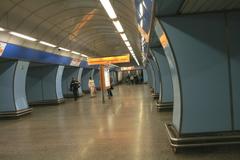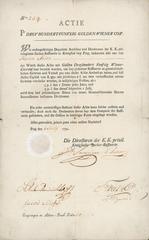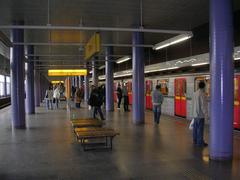
Klášter Augustiniánů Kanovníků Prague Visiting Hours Tickets and Historical Sites Guide
Date: 04/07/2025
Introduction to Klášter Augustiniánů Kanovníků and its significance in Prague
Klášter Augustiniánů Kanovníků in Prague stands as a beacon of rich historical, architectural, and spiritual heritage that captivates visitors seeking to explore one of the Czech capital’s most significant religious monuments. This Augustinian monastery, with origins tracing back to medieval times, offers a remarkable journey through centuries of ecclesiastical, cultural, and artistic evolution. Originally established on lands granted by King Václav II in the late 13th century, the monastery embodies Prague’s enduring religious traditions and resilience through turbulent historical periods such as the Hussite Wars and the Reformation (Augnet).
Architecturally, the Klášter Augustiniánů Kanovníků is distinguished by its unique blend of Gothic foundations and Baroque reinventions, notably featuring the octagonal nave of the Church of the Assumption of the Virgin Mary and St. Charles the Great, a symbol of imperial aspirations inspired by Charlemagne’s Palatine Chapel (cs.wikipedia). The monastery’s evolution under the patronage of figures like Emperor Charles IV and architects such as the Dientzenhofers highlights its importance within Prague’s urban and spiritual landscape.
Today, Klášter Augustiniánů Kanovníků not only serves as an active religious site but also houses the Museum of the Police of the Czech Republic, offering visitors an engaging cultural experience that marries historical reverence with contemporary exhibitions (tripomatic.com). Situated conveniently in Prague’s New Town and accessible by public transport, the monastery beckons history enthusiasts, art lovers, and casual travelers alike. This comprehensive guide provides detailed information on visiting hours, ticketing, accessibility, and nearby attractions, ensuring a rewarding visit to this historical gem (Prague Guide).
Whether you are drawn to the monastery’s medieval origins, Baroque artistry, or its modern cultural role, this guide equips you with everything needed to fully appreciate the Klášter Augustiniánů Kanovníků and its place among Prague’s historical sites.
Contents including history architecture visitor information tickets opening hours guided tours nearby attractions and FAQs
- Introduction
- Historical Overview
- Early Foundations and Medieval Development
- Architectural Evolution and Artistic Heritage
- Religious and Social Significance
- The Augustinians in Prague: Endurance and Renewal
- Architectural and Cultural Significance of Klášter Augustiniánů Kanovníků
- Historical Context and Foundation
- Architectural Significance
- Unique Centralized Plan
- Baroque Transformations
- Artistic and Decorative Features
- Cultural and Spiritual Importance
- Role in Prague’s Urban and Spiritual Landscape
- Pilgrimage and Popular Devotion
- Artistic Patronage and Legacy
- Symbolism and Urban Mythology
- Sacred Geometry and Urban Planning
- Legends and Local Traditions
- Preservation and Contemporary Use
- Restoration Efforts
- Current Functions
- Visitor Information: Tickets, Opening Hours, and Accessibility
- Visuals and Media
- Comparative Context
- Relationship to Other Augustinian Sites
- Influence on Prague’s Cultural Identity
- Visiting the Klášter Augustiniánů Kanovníků in Prague
- Historical Background
- Architectural and Artistic Significance
- Modern Use and Museum Exhibitions
- Visiting Information and Practical Tips
- Location and Access
- Klášter Augustiniánů Kanovníků Visiting Hours and Admission Tickets
- Facilities and Accessibility
- Guided Tours and Events
- Highlights and Unique Features
- Nearby Attractions
- Visitor Experience and Reviews
- Tips for a Memorable Visit
- Frequently Asked Questions (FAQ)
- Visual and Media Suggestions
- Internal Links
- Strahov Monastery Visiting Hours, Tickets, and Guide to Prague’s Historic Gem
- History and Cultural Significance
- Getting There and Location
- Strahov Monastery Visiting Hours
- Strahov Monastery Tickets and Entry
- Accessibility and Facilities
- Visiting the Library and Picture Gallery
- Exploring the Church and Grounds
- Suggested Itineraries and Tips
- Additional Services
- Frequently Asked Questions (FAQ)
- Conclusion
Introduction
Discover the rich history and stunning architecture of Klášter Augustiniánů Kanovníků (Augustinian Monastery of Canons) in Prague, one of the city’s most enduring religious sites. This guide will take you through its fascinating medieval origins, architectural evolution, and religious significance, while also providing practical visitor information including visiting hours, ticket details, accessibility, and nearby attractions. Whether you are a history enthusiast or a casual traveler exploring Prague’s historical sites, this monastery offers a unique glimpse into the spiritual and cultural fabric of the city.
Historical Overview
Early Foundations and Medieval Development
The origins of Klášter Augustiniánů Kanovníků in Prague are deeply rooted in the city’s medieval history. The site’s ecclesiastical significance predates the arrival of the Augustinians, with the Benedictine monks of Břevnov Abbey constructing the original Church of Saint Thomas and the adjacent chapel of Saint Dorothy before 1227 (Augnet). In 1285, King Václav II and Queen Guta, with the approval of the Abbot of Břevnov, granted these properties to the Augustinian friars, marking the formal establishment of the Augustinian presence in Prague (Augnet).
The Augustinians, officially known as the Order of the Hermit Friars of Saint Augustine, had been unified by Pope Alexander IV in 1256, consolidating various hermit communities into a single mendicant order tasked with active preaching and religious service (Monasteries.com). Their arrival in Prague in 1258 was part of a broader expansion across Western Europe, and the order quickly became integral to the city’s religious and cultural landscape.
Architectural Evolution and Artistic Heritage
The original church, built in the contemporary Gothic style, was approximately the same size as the current structure. After thirty-one years of construction, the priests’ house was completed and dedicated to Saint Thomas the Apostle in 1316 (Augnet). The main body of the church, dedicated to Saint Augustine, was completed in 1379, reflecting the architectural ambitions of the period (Augnet).
However, the church’s history was not without turmoil. During the Hussite Wars in 1420, the building was twice set on fire, leading to significant damage. Restoration efforts culminated in 1497, allowing the church to reopen for public worship (Augnet). The reign of Emperor Rudolph II saw further rebuilding, with the church and monastery serving as both the parish church and pro-cathedral of Prague.
A major transformation occurred between 1723 and 1731, when the renowned Czech Baroque architects Christoph Dientzenhofer and his son Kilian Ignaz Dientzenhofer redesigned the church in a restrained Baroque style (Prague Guide). Today, little remains of the original Gothic structure apart from the spire. The interior is adorned with frescoes by Václav Vavřinec Reiner, depicting the life of Saint Augustine and, in the dome, the legend of Saint Thomas. Reiner’s work, completed in just two years, is complemented by sculptures from Ferdinand Maxmilian Brokoff and a main altar dating from 1731. Notably, the paintings of Saint Thomas and Saint Augustine above the high altar are copies of works by Rubens, with the originals housed in the Sternberg Palace (Prague Guide).
Religious and Social Significance
Throughout its history, the Augustinian Monastery has played a pivotal role in Prague’s religious life. It is the only church in Prague that has remained Catholic since its foundation, a testament to its resilience through periods of religious upheaval, including the Reformation and the Hussite Wars (Augnet). The Augustinians’ commitment to education, charity, and community engagement has made the monastery a center of spiritual and social activity for centuries.
The monastery’s archives contain documents of immense historical value, including a 1285 charter from King Wenceslas II granting the church and monastery to the Augustinians. These records, along with papal bulls, contracts, photographs, and maps, were displayed during the 775th anniversary celebrations in 2003 under the theme “For the Faith of Every Generation” (Augnet).
The Augustinians in Prague: Endurance and Renewal
The Augustinian order in Prague has endured significant challenges, particularly during the Reformation and subsequent periods of religious suppression. While many Augustinian houses across Europe were dissolved, the Prague monastery survived and continued its mission (Monasteries.com). The order’s resilience is further exemplified by figures such as Agustin Schubert O.S.A., who died as a martyr in Dachau concentration camp in 1942 and is in the process of being declared a saint (Augnet).
The monastery’s role in modern Czech history is also notable. In 1989, Saint Thomas’ Church hosted the Peace Prayers that contributed to the fall of the Communist government in Czechoslovakia, underscoring its ongoing significance as a site of spiritual and civic importance (Augnet).
Visiting Klášter Augustiniánů Kanovníků: Hours, Tickets, and Tips
Visiting Hours and Admission
Klášter Augustiniánů Kanovníků welcomes visitors throughout the week with the following schedule:
- Monday to Saturday: 11:00 AM – 1:00 PM
- Sunday: 9:00 AM – 12:00 PM and 4:30 PM – 5:30 PM
Admission to the church and monastery is free, making it an accessible attraction for both tourists and worshippers (Prague Guide).
Accessibility and Visitor Services
The monastery is located in Malá Strana (Lesser Town), easily reachable on foot from Charles Bridge and Prague Castle. The site is accessible to visitors with limited mobility; however, it is advisable to check for any specific accessibility arrangements in advance.
Guided tours are sometimes available through local tour operators and may include detailed insights into the monastery’s history, art, and architecture. Visitors interested in attending Mass can do so on Sundays at 11:00 AM, with services also held regularly throughout the week.
Special Events and Exhibitions
The church occasionally hosts special exhibitions and concerts, especially during anniversaries or religious festivals. In 2003, for example, the monastery celebrated its 775th anniversary with historical exhibitions showcasing rare documents and artifacts.
Visitors are encouraged to check official websites or local tourist information centers for updated event schedules.
Nearby Attractions
While visiting Klášter Augustiniánů Kanovníků, take advantage of its prime location in Malá Strana, one of Prague’s most picturesque districts. Nearby attractions include:
- Charles Bridge: A historic pedestrian bridge connecting Malá Strana with the Old Town.
- Prague Castle: The iconic castle complex offering panoramic views and rich history.
- Wallenstein Garden: A beautiful Baroque garden perfect for a peaceful stroll.
This makes the monastery an excellent stop on a walking tour of Prague’s top historical sites.
Frequently Asked Questions (FAQ)
Q: Is there an entrance fee for Klášter Augustiniánů Kanovníků? A: No, admission is free.
Q: What are the opening hours for visiting? A: Monday to Saturday from 11 AM to 1 PM; Sundays from 9 AM to 12 PM and 4:30 PM to 5:30 PM.
Q: Are guided tours available? A: Guided tours may be arranged through local operators; check in advance.
Q: Is the monastery accessible for people with disabilities? A: The site is generally accessible, but visitors should confirm accessibility details before visiting.
Q: Can visitors attend Mass? A: Yes, Mass is celebrated weekly, including an English service on Sundays at 11 AM.
Conclusion
Klášter Augustiniánů Kanovníků stands as a remarkable testament to Prague’s religious heritage, architectural beauty, and resilient spiritual community. Whether you are drawn by its medieval history, Baroque artistry, or its role in modern Czech events, this monastery offers a meaningful and enriching experience.
Plan your visit today to explore one of Prague’s hidden gems. Remember to check current visiting hours, attend a service if you wish, and enjoy nearby attractions to make the most of your trip.
For more travel tips and historical insights, follow our social media channels and download the Audiala app for curated Prague guides and audio tours.
Key Milestones and Legacy
- Pre-1227: Original church and chapel built by Benedictines.
- 1258: Augustinians begin serving in Prague.
- 1285: King Václav II grants church and property to Augustinians.
- 1316: Priests’ house completed and dedicated to Saint Thomas.
- 1379: Main body of the church completed.
- 1420: Church damaged during Hussite Wars; restored in 1497.
- 1723–1731: Baroque reconstruction by the Dientzenhofers.
- 1989: Peace Prayers held, contributing to the Velvet Revolution.
- 2003: 775th anniversary celebrated with historical exhibitions.
The Klášter Augustiniánů Kanovníků remains a cornerstone of Prague’s spiritual and cultural identity, inviting all visitors to step into its historic halls and experience its timeless legacy (Augnet; Prague Guide).
Historical Context and Foundation
The Klášter Augustiniánů Kanovníků (Monastery of Augustinian Canons) in Prague, located in the Karlov area of the New Town, is a remarkable historical site that embodies the ambitions of Emperor Charles IV to elevate Prague’s spiritual and cultural stature in the 14th century. Founded in 1350, this monastery was integral to Charles IV’s vision of making Prague a hub of religious, educational, and intellectual activity within the Holy Roman Empire. The Augustinian Canons were selected for their dedication to communal living, pastoral care, and their renowned role in education and church administration (cs.wikipedia).
The monastery’s founding coincided with the erection of the Church of the Assumption of the Virgin Mary and St. Charles the Great (Kostel Nanebevzetí Panny Marie a svatého Karla Velikého), which serves as the spiritual centerpiece of the complex. The church symbolizes the link between Prague and Charlemagne’s legacy, reinforcing the city’s role as the successor to imperial Christian tradition.
Architectural Significance
Unique Centralized Plan
The architectural highlight is the church’s distinctive octagonal nave, a design rare in Gothic Bohemia and inspired by the Palatine Chapel of Charlemagne in Aachen. Measuring approximately 22.8 meters in diameter, this octagonal plan is a symbolic nod to Charles IV’s imperial aspirations and Prague’s connection to the Holy Roman Empire (cs.wikipedia).
The polygonal presbytery closes with six sides of a decagon and features an intricate ribbed vault typical of late Gothic architecture. The church’s exterior is reinforced by sturdy buttresses, topped by Baroque cornices and domed roofs added in later centuries, creating a unique silhouette visible across Prague.
Baroque Transformations
The 17th and 18th centuries brought significant Baroque enhancements, including ornate cornices, domed roofs with lanterns, and richly decorated interiors. These Baroque elements seamlessly integrate with the original Gothic framework, reflecting Prague’s layered architectural history (cs.wikipedia).
Artistic and Decorative Features
Inside, visitors can admire the star-shaped vaulting and Baroque altarpieces and sculptures. Noteworthy are the statues by Jan Jiří Šlanzovský on the balcony above the Holy Stairs (Svaté schody), including the evocative “Ecce Homo” group. Below the Holy Stairs lies “Little Palestine,” a series of chapels evoking the Holy Land landscape, housing Prague’s oldest preserved nativity scene from 1738 (cs.wikipedia).
The church also contains three burial crypts for abbots, canons, and notable laypersons, underscoring the monastery’s spiritual and social importance.
Cultural and Spiritual Importance
Role in Prague’s Urban and Spiritual Landscape
The monastery was a cornerstone of medieval and early modern Prague’s spiritual and educational life. As one of five major churches founded by Charles IV in the New Town, it contributed to a symbolic cross layout across the city, intended to imbue Prague with sacred geometry and the image of a “New Jerusalem” (cs.wikipedia).
The Augustinian Canons were esteemed scholars and pastors, maintaining a significant library and serving as a center for theological study, manuscript production, and clergy training. Their influence extended well beyond religious affairs into Prague’s intellectual and cultural development.
Pilgrimage and Popular Devotion
The church’s dedication to the Virgin Mary and Charlemagne made it a popular pilgrimage destination in the Middle Ages. The Holy Stairs, modeled after Rome’s Scala Sancta, attracted devotees seeking indulgences. Even today, pilgrims climb the stairs on their knees, preserving this centuries-old tradition (cs.wikipedia).
Artistic Patronage and Legacy
The monastery’s art and architecture reflect evolving religious and aesthetic tastes through Gothic and Baroque layers. Preservation of the 18th-century nativity scene and ongoing use for worship and cultural events highlight its continued relevance.
Symbolism and Urban Mythology
Sacred Geometry and Urban Planning
The monastery’s location within Prague’s urban fabric carries symbolic weight. The cross-shaped arrangement of Charles IV’s five New Town churches was meant to protect the city spiritually, invoking divine favor and emphasizing the monarch’s piety. The octagonal church plan symbolizes resurrection and eternity, common Christian motifs (cs.wikipedia).
Legends and Local Traditions
Legends of miraculous healings, apparitions, and hidden treasures surround the monastery, especially its crypts and subterranean chapels. These stories contribute to its allure for visitors interested in Prague’s esoteric and spiritual history.
Preservation and Contemporary Use
Restoration Efforts
20th and 21st-century restoration projects have focused on structural stabilization, conservation of Gothic and Baroque elements, and adapting the complex for modern use while preserving its historical integrity (cs.wikipedia).
Current Functions
Today, the monastery and church remain active religious sites, hosting regular services, concerts, and cultural events. They are also open to tourists exploring Prague historical sites, offering guided tours that highlight architectural features, symbolism, and history.
Visitor Information: Tickets, Opening Hours, and Accessibility
- Visiting Hours: The Klášter Augustiniánů Kanovníků is generally open to visitors Tuesday through Sunday from 10:00 AM to 5:00 PM. It is closed on Mondays and certain public holidays. Visitors should check the official website or local tourist information for seasonal variations.
- Tickets: Entrance fees are modest, typically around 100 CZK for adults, with discounts for students, seniors, and groups. Some special events may have separate pricing.
- Accessibility: The site is partially accessible for visitors with reduced mobility, although some areas, such as the crypts and Holy Stairs, may be challenging to access. Assistance is available upon request.
- Travel Tips: The monastery is located in Prague’s New Town, easily reachable by tram or metro (Karlovo náměstí station). Visitors are encouraged to wear comfortable shoes due to cobblestone streets and uneven surfaces.
Visuals and Media
Visitors can enjoy a range of visual highlights, including high-resolution images of the church’s octagonal nave, Baroque altarpieces, and the nativity scene. Virtual tours and maps are often available on official tourism websites, offering interactive exploration before a visit.
Comparative Context
Relationship to Other Augustinian Sites
While unique in architectural conception, the Klášter Augustiniánů Kanovníků shares features with other Augustinian monasteries in the Czech Republic, such as the one in Roudnice nad Labem. Both emphasize education, pastoral care, and art patronage, but Prague’s monastery holds a distinctive national significance due to its imperial connections (objevujpamatky.cz).
Influence on Prague’s Cultural Identity
The monastery contributes to Prague’s reputation as a city rich in churches, monasteries, and sacred art. Its architectural innovations and historical depth continue to inspire scholars, artists, and visitors exploring the city’s spiritual heritage.
Frequently Asked Questions (FAQs)
Q: What are the opening hours of Klášter Augustiniánů Kanovníků?
A: Typically Tuesday to Sunday, 10:00 AM to 5:00 PM; closed on Mondays. Check official sources for updates.
Q: How much is the entrance ticket?
A: Standard adult tickets cost around 100 CZK, with discounts available for students and seniors.
Q: Is the monastery accessible for visitors with disabilities?
A: Partial accessibility is provided, but some areas like crypts may be difficult to access.
Q: Can I attend religious services or cultural events at the monastery?
A: Yes, the church holds regular services and hosts concerts and cultural events open to the public.
Q: Are guided tours available?
A: Guided tours are often offered and highly recommended to fully appreciate the site’s history and architecture.
Q: How do I get there using public transport?
A: Use Prague’s metro or tram to Karlovo náměstí station, then walk a short distance to the monastery.
Plan Your Visit and Explore More
Discover the rich history and architectural beauty of Klášter Augustiniánů Kanovníků on your next trip to Prague. For more detailed visitor information, official updates, and virtual tours, visit the Prague Tourism Official Site. Enhance your experience by downloading the Audiala app for guided audio tours of Prague’s historical sites. Don’t forget to explore related articles on our site about Prague’s medieval churches and cultural heritage. Follow us on social media for the latest updates and event announcements.
Alt text: Exterior view of Klášter Augustiniánů Kanovníků monastery in Prague showcasing its Gothic and Baroque architecture.
Alt text: Interior of the octagonal nave of the Church of the Assumption of the Virgin Mary and St. Charles the Great.
Alt text: Statue group “Ecce Homo” by Jan Jiří Šlanzovský above the Holy Stairs.
Introduction
Discover the Klášter Augustiniánů Kanovníků (Monastery of Augustinian Canons) in Prague, a hidden gem among Prague historical sites that offers a unique blend of medieval and Baroque architecture, rich cultural heritage, and engaging exhibitions. Whether you’re interested in history, architecture, or family-friendly activities, this site provides an enriching experience. This guide covers Klášter Augustiniánů Kanovníků visiting hours, tickets, historical highlights, and practical tips to help you plan your visit.
Historical Background
The Klášter Augustiniánů Kanovníků (Monastery of Augustinian Canons) in Prague, also known as the Augustinian Canonry at Karlov, stands as a testament to the city’s medieval and baroque heritage. Founded in 1350 by King Charles IV, the monastery was part of his ambitious plan to elevate Prague’s status as the capital of the Holy Roman Empire (cs.wikipedia.org). The monastery was established on a prominent hill above the then-village of Nusle, directly facing the Vyšehrad fortress, symbolizing both spiritual and political power.
The original complex was constructed in the Gothic style, with the centerpiece being the Church of the Assumption of the Virgin Mary and St. Charles the Great. The church’s unique octagonal floor plan was inspired by the Palatine Chapel in Aachen, Germany, the coronation church of Charlemagne, to whom the church is also dedicated (turistickamapa.cz). This architectural choice was a deliberate statement by Charles IV, linking Prague’s spiritual significance to the legacy of the Holy Roman Empire.
Over the centuries, the monastery underwent several reconstructions. The most significant transformation occurred during the Baroque period, when the complex was extensively remodeled and expanded. Despite suffering damage and periods of abandonment, the Augustinian Canons returned and restored the site multiple times. The monastery was ultimately dissolved in 1785 as part of Emperor Joseph II’s sweeping ecclesiastical reforms, which led to the closure of many monastic institutions across the Habsburg Empire (tripomatic.com).
Architectural and Artistic Significance
The monastery complex is a striking blend of Gothic and Baroque architectural elements. The convent buildings form a four-winged structure enclosing a square courtyard, with facades that display early Baroque features and later Classicist modifications. Notable are the profiled cornices, remnants of Gothic and Renaissance details, and the stone and stucco portals that mark the entrances (turistik.cz).
The Church of the Assumption of the Virgin Mary and St. Charles the Great is particularly remarkable for its octagonal layout, a rarity in Central European ecclesiastical architecture. This design echoes the imperial chapel in Aachen and underscores the church’s dual dedication to the Virgin Mary and Charlemagne. The church’s interior features a blend of Gothic vaulting and Baroque ornamentation, with side altars and a main altar created by prominent 18th-century artists such as J. Hennevogel and J. I. König (vyletnarip.cz).
The presbytery walls are adorned with a series of twelve panel paintings known as the “Passion Cycle,” attributed to Hans Hees, and a copy of the votive painting of Jan Očko of Vlašim. The pulpit, with its Rococo decoration, dates to 1777. These artistic treasures reflect the monastery’s historical role as a center of religious and cultural life in Prague.
Modern Use and Museum Exhibitions
Following its dissolution, the monastery complex served various secular purposes. In the 19th century, it was used as a hospice for the indigent and terminally ill, and later as an annex of the city hospital Na Bulovce (turistikamapa.cz). Since 1991, the site has housed the Museum of the Police of the Czech Republic (Muzeum Policie ČR), which occupies the former convent buildings (tripomatic.com).
The museum’s exhibitions cover the history of policing in the Czech lands, featuring displays of historical uniforms, weapons, equipment, and documents. The museum is family-friendly and includes interactive exhibits, making it a popular destination for visitors with children. The surrounding park, with benches, a fountain, and a children’s traffic playground, offers a pleasant space for relaxation (turistickamapa.cz).
Visiting Information and Practical Tips
Location and Access
The Klášter Augustiniánů Kanovníků is located in Prague 2, on Na Karlově street, just south of the city center. The address is Boženy Němcové 453/2, 120 00 Praha 2 (tripomatic.com). The site is easily accessible by public transport:
- Metro: The nearest metro station is I.P. Pavlova (Line C), from which it is a 10-minute walk uphill.
- Tram: Several tram lines stop at Nuselské schody or Svatoplukova, both within walking distance.
- Bus: Local buses also serve the area.
Parking is limited in the immediate vicinity, so public transport is recommended.
Klášter Augustiniánů Kanovníků Visiting Hours and Admission Tickets
- Museum of the Police of the Czech Republic: Typically open Tuesday to Sunday, 10:00–17:00. Closed on Mondays and public holidays. For the latest Klášter Augustiniánů Kanovníků visiting hours, check the official museum website.
- Admission Fees: As of early 2025, standard adult tickets cost approximately 60–100 CZK, with discounts available for students, seniors, and families. Children under six often enter free. Prices are approximate and subject to change; visitors should verify current rates before visiting.
Facilities and Accessibility
- Restrooms: Available inside the museum.
- Café: A small refreshment area is located within the museum.
- Park: The adjacent park is open to the public and features seating, a fountain, and a children’s playground.
- Accessibility: The museum is partially accessible to visitors with limited mobility; however, some historic areas within the monastery and church contain steps or uneven surfaces that may pose challenges. Visitors requiring assistance should contact the museum in advance.
Guided Tours and Events
Guided tours of the museum and the church are available for groups by prior arrangement. The church occasionally hosts concerts and special events, particularly during cultural festivals or religious holidays. For up-to-date information on tours and events, consult the museum’s event calendar.
Highlights and Unique Features
- Octagonal Church: The Church of the Assumption of the Virgin Mary and St. Charles the Great is one of Prague’s most architecturally unique churches, with its octagonal plan and imperial symbolism (cs.wikipedia.org).
- Baroque-Gothic Fusion: The complex is a rare example of a site where Gothic and Baroque elements coexist harmoniously.
- Museum Exhibits: The Police Museum’s collection is extensive, covering everything from medieval law enforcement to modern policing, including vehicles, uniforms, and forensic technology.
- Family-Friendly Park: The adjacent park offers a safe and pleasant environment for children to play while adults enjoy the historic surroundings.
Nearby Attractions
The monastery is located in a culturally rich area of Prague, with several notable sites within walking distance:
- Vyšehrad Fortress: A historic fort with panoramic views, ancient ramparts, and the Vyšehrad Cemetery, the resting place of many Czech luminaries (earthtrekkers.com).
- Church of St. Apollinaris: Another significant Gothic church nearby.
- Folimanka Park: A large urban park ideal for walks and relaxation.
- Nusle Bridge: An impressive modern structure spanning the Nusle Valley.
Visitor Experience and Reviews
The Klášter Augustiniánů Kanovníků consistently receives high ratings from visitors, who praise its tranquil atmosphere, architectural beauty, and the engaging Police Museum (turistickamapa.cz). Compared to Prague’s major tourist hotspots, it is less crowded, offering a more contemplative and authentic experience. It is particularly recommended for travelers interested in history, architecture, and off-the-beaten-path attractions.
Tips for a Memorable Visit
- Combine with Nearby Sights: Plan a visit to Vyšehrad or other historic locations in Prague’s New Town to enrich your day.
- Photography: The church’s interior and monastery courtyard provide excellent photo opportunities, especially during morning or late afternoon light.
- Family Visits: The museum and adjacent park make this a great stop for families with children.
- Check for Events: Look for concerts or special exhibitions to enhance your experience.
Frequently Asked Questions (FAQ)
Q: Where can I buy tickets for the Museum of the Police of the Czech Republic? A: Tickets are available at the museum entrance; some special events may offer online booking. Check the official website for details.
Q: Is the Klášter Augustiniánů Kanovníků accessible for wheelchair users? A: The museum is partially accessible, but some historic areas have steps or uneven flooring. Visitors with mobility limitations are advised to contact the museum ahead of their visit.
Q: What are the best times to visit to avoid crowds? A: Weekdays, especially mornings, tend to be less crowded. Avoid weekends and public holidays if you prefer a quieter visit.
Q: Are guided tours available? A: Yes, guided tours can be arranged for groups by prior booking through the museum.
Q: Is photography allowed? A: Photography is generally permitted in the museum and church, but flash and tripods may be restricted. Confirm on-site or via the museum’s website.
Visual and Media Suggestions
Including high-quality images of the monastery’s exterior, the octagonal church interior, museum exhibits, and the park can greatly enhance the visitor experience and SEO performance. Ensure all images have descriptive alt tags with keywords such as “Klášter Augustiniánů Kanovníků,” “Museum of the Police of the Czech Republic,” and “Prague historical sites.” Embedding an interactive map or virtual tour link, if available, can also assist visitors in planning their trip.
Internal Links
Conclusion and Call to Action
Plan your visit to the Klášter Augustiniánů Kanovníků today to explore one of Prague’s most fascinating historical sites. Don’t forget to download the Audiala mobile app for audio guides and updates on Prague historical sites, including this monastery. Follow us on social media for the latest news, events, and travel tips to make the most of your trip to Prague.
Introduction
Strahov Monastery (Strahovský klášter) stands as one of Prague’s most treasured historical sites, offering visitors a unique glimpse into Czech history, Baroque architecture, and religious heritage. Located in the Prague Castle District, this monastery is famed for its stunning library halls, rich art collections, and peaceful gardens. This comprehensive guide covers everything you need to know about Strahov Monastery visiting hours, ticket prices, accessibility, and practical tips to make the most of your visit to this iconic Prague historical site.
History and Cultural Significance
Founded in 1143 by the Premonstratensian order, Strahov Monastery has played a pivotal role in the spiritual and cultural life of Prague for centuries. Its Baroque architecture, developed mainly in the 17th and 18th centuries, houses priceless manuscripts, ancient theological and philosophical texts, and an impressive Picture Gallery featuring Gothic, Renaissance, and Baroque art. The monastery’s library halls are considered masterpieces of Baroque interior design and hold some of the most valuable collections in Central Europe. Today, it remains an active religious site, preserving centuries-old traditions while welcoming visitors from around the world.
Getting There and Location
Strahov Monastery is situated at Strahovské nádvoří 1/132, 118 00 Prague 1, on the western edge of the Prague Castle District. It is easily accessible by public transport. The most convenient route involves taking tram lines 22 or 23 from the city center (e.g., Národní třída or Malostranská metro stations) and disembarking at the Pohořelec stop, two stops beyond Prague Castle. From there, a short uphill walk leads you to the monastery entrance on your left (View from Prague; Visit Prague).
If arriving by car, parking is available in designated lots outside the monastery grounds; parking inside the complex is not permitted (Visit Prague).
Strahov Monastery Visiting Hours
The monastery is open daily from 9:00 AM to 5:00 PM. The ticket office, located in the Church of St. Roch, operates from 9:00 AM to 4:15 PM, with slight variations depending on the tour type (Strahov Monastery Official). For a more relaxed visit, consider late spring (May) or early autumn (September), when milder weather and fewer crowds enhance the experience. Peak summer months (June–August) bring lively atmosphere but also higher prices and more visitors (Travellers Worldwide; Touropia).
Strahov Monastery Tickets and Entry
Tickets are sold separately for the monastery’s main attractions—there is no single combined ticket for all areas:
- Strahov Library (non-guided): 150 CZK (adults), 80 CZK (students/seniors), 60 CZK (children 6–15 years), 300 CZK (family ticket for 2 adults + 2 children).
- Complete Guided Tour (Library, Picture Gallery, Church): 290 CZK.
- Picture Gallery: Separate ticket required (View from Prague; Strahov Monastery Official).
Tickets can be purchased at the ticket office (card or cash in CZK) or online, allowing visitors to skip queues. Online payments accept CZK, EUR, and USD (Strahov Monastery Official).
Accessibility and Facilities
- Restrooms: Located in the Strahov Courtyard, open daily 9:00 AM–7:00 PM, wheelchair accessible, with a 20 CZK service fee (Strahov Monastery Official).
- Gift Shop: Situated at the main gate and operated by monks, offering unique souvenirs exclusive to Strahov (Strahov Monastery Official).
- Refreshments: The complex includes a restaurant and other venues. The monastery brewery is notable for traditional Czech beers.
- Gardens: Open to the public year-round, the gardens offer peaceful surroundings and panoramic views of Prague. Admission to the gardens and grounds is free (View from Prague).
- Accommodation: Hotel Questenberg is located within the monastery grounds for visitors wishing to stay overnight (Strahov Monastery Official).
Visiting the Library and Picture Gallery
The Strahov Library is renowned for its Baroque Theological and Philosophical Halls. General admission allows viewing these halls from the doorway only, as the interiors are roped off to protect historic collections. Photography is permitted from the entrance, but expect possible queues for photos (View from Prague).
Occasionally, private tours offer interior access, though these are rare and require advance inquiry or private group arrangements.
The Picture Gallery features Gothic, Renaissance, and Baroque artworks. Tickets are sold separately, and guided tours provide deeper insights.
Exploring the Church and Grounds
The Church of the Assumption of the Virgin Mary welcomes visitors for free entry, either during services or for general viewing through the main glass door. As an active place of worship, visitors should show respect during religious activities (View from Prague).
The monastery grounds, gardens, and courtyards are open at all times and offer some of the best panoramic views of Prague, especially beautiful in late afternoon light.
Suggested Itineraries and Tips
- Combine with Nearby Attractions: The monastery is perfect for a walking tour including Petřín Hill, Prague Castle, and Lesser Town. A popular route starts at Kinský Garden, ascends Petřín Hill, visits Strahov Monastery, then continues to Prague Castle (View from Prague).
- Photography: Arrive early to capture library hall photos before crowds build.
- Weather: Spring and early autumn offer ideal sightseeing conditions; summer is bustling, and winter quieter but with possible reduced hours (Travellers Worldwide; PragueGo).
- Language: Signage is in Czech and English. English guided tours are available but should be booked ahead.
- Payment: Card payments accepted at ticket offices but only in CZK. Online ticketing supports CZK, EUR, and USD (Strahov Monastery Official).
- Dress Code: Modest attire is recommended due to the monastery’s active religious nature.
Additional Services
- Guided Tours: Offered for individuals and groups, providing enhanced historical context and access to more areas. Check availability and languages in advance (Strahov Monastery Official).
- Events and Exhibitions: The monastery occasionally hosts concerts, exhibitions, and cultural events; check the official website for current schedules.
- Accessibility: Main areas are wheelchair accessible, though some historic sections may pose challenges.
Frequently Asked Questions (FAQ)
What are the Strahov Monastery opening hours? The monastery is open daily from 9:00 AM to 5:00 PM, with the ticket office closing at 4:15 PM.
How do I buy Strahov Monastery tickets? Tickets can be purchased at the ticket office or online via the official website, the latter allowing you to skip queues.
Is Strahov Monastery wheelchair accessible? Yes, main areas including restrooms are wheelchair accessible, though some historic sections may have limited access.
Are guided tours available? Yes, guided tours in multiple languages are available and recommended for a deeper experience. Booking in advance is advised.
Conclusion and Call to Action
Strahov Monastery is a must-visit Prague historical site, blending rich history, stunning architecture, and tranquil surroundings. Whether you’re interested in Baroque art, ancient manuscripts, or simply breathtaking views, this guide to Strahov Monastery visiting hours, tickets, and practical tips will help you plan an unforgettable visit.
For the latest updates on opening hours, ticket prices, and special events, always check the official Strahov Monastery website.
Enhance your Prague travel experience by downloading the Audiala app for real-time updates and travel tips. Don’t forget to explore related posts about Prague’s top attractions and follow us on social media for more insider guides and inspiration.
Recommended Visuals:
- High-quality images of Strahov Monastery exterior, library halls, and gardens with alt tags like “Strahov Monastery Baroque Library Hall” and “Panoramic View from Strahov Monastery Gardens”.
- Embedded interactive map showing the monastery’s location within the Prague Castle District.
- Links to virtual tours if available.
Internal Links Suggestions:
- Articles on Prague Castle
- Guides to Petřín Hill and Lesser Town
- Prague travel tips and seasonal guides
Summary of key visiting information and tips for Klášter Augustiniánů Kanovníků
Klášter Augustiniánů Kanovníků stands as a multifaceted monument to Prague’s rich religious, architectural, and cultural heritage. From its medieval foundations granted by Czech royalty to its Baroque transformation and ongoing spiritual significance, the monastery encapsulates centuries of history within its walls. Visitors can admire the unique octagonal church plan symbolizing imperial legacy, explore artistic masterpieces spanning Gothic frescoes to Baroque sculptures, and engage with modern exhibitions at the Museum of the Police of the Czech Republic housed on-site (Augnet; tripomatic.com).
The monastery’s accessibility, free or modestly priced admission, and proximity to other iconic Prague landmarks such as Vyšehrad Fortress and Charles Bridge make it an ideal destination for travelers seeking both depth and convenience. Its role in pivotal historical events, including the 1989 Peace Prayers contributing to the Velvet Revolution, further enhances its contemporary relevance (Prague Guide).
We encourage visitors to plan their trip using updated information on opening hours, guided tours, and special events, and to enrich their experience through digital tools like the Audiala app for curated audio tours. Whether exploring the monastery’s quiet cloisters, attending a mass, or delving into museum exhibits, Klášter Augustiniánů Kanovníků offers a profound connection to Prague’s spiritual and cultural fabric.
For the most current details and travel tips, consult official resources and consider combining your visit with nearby historical sites to fully immerse yourself in Prague’s heritage. Follow our social media channels and download the Audiala app to stay informed about events and insider guides that will enhance your journey through the heart of the Czech Republic’s capital (Prague Tourism Official Site; Muzeum Policie ČR).
Sources official websites and further reading about Klášter Augustiniánů Kanovníků
- Klášter Augustiniánů Kanovníků: A Historic Prague Monastery You Must Visit – Visiting Hours, Tickets, and Travel Tips, 2025 http://www.augnet.org/en/history/places/4203-czech-rep-prague/
- Architectural and Cultural Significance of Klášter Augustiniánů Kanovníků: Visiting Hours, Tickets, and Prague Historical Sites Guide, 2025 https://cs.wikipedia.org/wiki/Kostel_Nanebevzet%C3%AD_Panny_Marie_a_svat%C3%A9ho_Karla_Velik%C3%A9ho
- Visiting the Klášter Augustiniánů Kanovníků in Prague: Hours, Tickets & Historical Highlights, 2025 https://tripomatic.com/cs/poi/klaster-augustinianu-kanovniku-poi:344027
- Klášter Augustiniánů Kanovníků (Church of St. Thomas) – Prague Guide, 2025 https://www.prague-guide.co.uk/church-of-st-thomas/
- Prague Tourism Official Site, 2025 https://www.prague.eu/en
- Museum of the Police of the Czech Republic Official Site, 2025 https://www.muzeumpolicie.cz/



